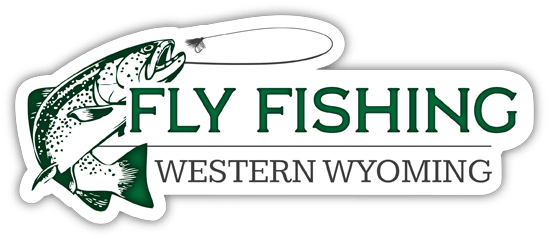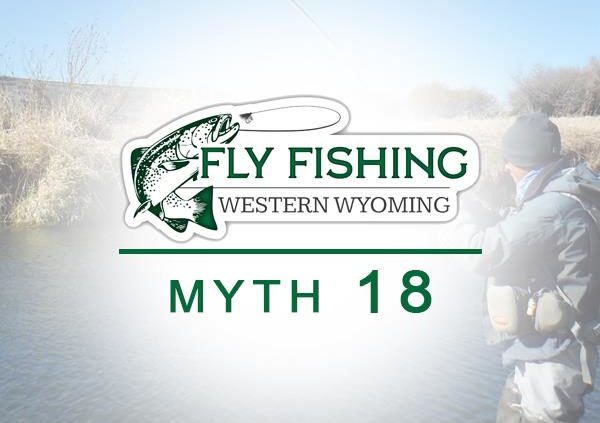Footwear
Preamble
Before we get into the next myth, I’d like to discuss this year’s Wyoming snow pack and what it may mean for our Southwestern Wyoming fishing. As of Feb 1st, the Wyoming Range, which draws into both the Hams Fork and Smiths Fork, is at about 150% of normal snowpack. All it means at this point is that we are guaranteed that the reservoirs will be full as of July 1.
As I mentioned in Myth # 8, what happens in the Spring and Summer really supersedes what is happening now. If by the end of March we are still at 150% of normal, one could begin to speculate that we will have a big run off, even into July. Even then, there will be no way to accurately predict July run off. A cold, wet May and June could put run off into the middle of July. A hot, dry May and June could see normal flows by the end of June.
Bottom line; The Smith’s Fork is much more impacted by runoff than the Hams Fork (where the Viva Naughton Dam mitigates erratic flows) or Green River (where snow pack in the wind River Mountains is nearer normal). The Hams will be fishable by mid-June and stay good through the summer unless we have a really hot and dry spring and summer. The Green will be fishable by anywhere from June 25th to July 5th. The Smith will be fishable by mid to late July and be good through the summer and fall. Schedule your trip when it makes sense to you personally, and don’t fret (yet) about snowpack – it simply doesn’t mean much!
Footwear
I’d like to pass on a bit more information on waders, before we get into footwear. I have found a company in Oregon, that makes custom waders. USIA makes custom non-breathable waders that have a lifetime warranty, rate 4 ½ – 5 stars on all rating services, are relatively inexpensive (base wader $280.00), and are virtually bulletproof, I have ordered a pair with built in boots that are rated to below 0°, and actually fit my feet at the same time they fit my body! I have a size 13 ½ foot, but a 32” waist. Any normal wader that fits my foot is built for people that are 6’ 4” tall and have a 40” waist. If I try to fit the waders to my body, I end up with a size 10-foot size! In addition to the custom fitting, they have really cool colors and lots of options. Mine are burgundy and black! (Add a little life to the stream side decor.) You can get stocking feet, extra pockets, zippers, reinforcement, etc. Check out their website – especially if you have an unusual body type.
Now back to footwear. I have lots of clients who swear their choice in footwear is the best choice – or only choice. With most things in life (politics, and day-to-day decision making included), nearly every choice carries with it an opportunity cost. Let’s start with soles.
Rubber Soles:
Advantages
- Generally better than felt on the dry ground, leaves, and steep hills.
- They tend to wear better than felt.
- They are easy to clean and dry fast.
- They carry fewer diseases and are legal in all 50 states.
Disadvantages
- Most manufacturer’s claims of “sticky” rubber are, at the least, overblown.
Felt Soles:
Advantages
- They grip most mossy surfaces better than rubber.
Disadvantages
- Generally not as good as rubber on the dry ground, leaves, and steep hills.
- They tend not to wear as well as rubber.
- They are not as easy to clean and dry more slowly than rubber.
- They carry more diseases and are not legal in all states.
Metal Studs:
Advantages
- Absolutely helpful with grip in both the water and on land.
- Can be placed on any sole.
- Are relatively inexpensive.
Disadvantages
- They add a bit of weight.
- They make noise when scraping on hard surfaces.
- They add a bit of expense and effort of installation.
I don’t believe that in most situations the noise factor created by metal studs is really that important. I simply haven’t noticed fish on high traffic streams getting spooked. But your situation may be different! I like rubber soles with 5 or 6 strategically placed studs. This combination gives me the best of both worlds with only the noise factor as a potential negative.
Footwear Type
* Stocking foot waders, separate boots
Advantages
- Protect the foot.
- Provide ankle support.
- May get better individualized “fit” for your feet than built in boots.
- Can wear them without waders.
Disadvantages
- Need gravel guards.
- Are heavier than wading shoes.
- Take longer to dry than built in boots.
* Boots built into waders
Advantages:
- Easy on – off.
- Less expensive
- Warmer
- Don’t need gravel guards
Disadvantages:
- Tougher to get a good individual fit.
- Often heavier.
- Less flexible in terms of options.
- Can’t wear them without the waders.
* Wading Shoes
Advantages:
- Less expensive.
- Cooler with no waders.
Disadvantages
- Can’t use with waders.
- Exposes ankles to injury.
- They can come off the foot.
- Rocks/debris get in the shoe.
- Sandals – I can’t seriously recommend sandals to anyone. They may be “cool”, but in most situations, they simply are not comfortable. I’ve seen lots of ripped off toenails, puncture wounds, time spent removing debris, etc.
You should make sure your footgear is large enough to accommodate adequate insulation without constricting your feet. Poor circulation will, at best, lead to cold feet and, at worst, damage your feet. By putting up with constriction and/or uninsulated gear, I have some nerve damage in my feet from standing in 45° water for days and hours on end. I hope this helps with some of your decision making!




Leave a Reply
Want to join the discussion?Feel free to contribute!